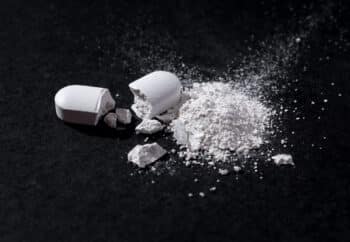What Makes Fentanyl So Dangerous?

What Makes Illicit Fentanyl Dangerous?
Fentanyl, a powerful synthetic Opioid, was initially created to help manage pain in medical settings.
However, unlike its pharmaceutical counterpart, illicit Fentanyl is unpredictable and highly risky. This illegal form is extremely dangerous, as it’s often produced in unsupervised conditions and can vary significantly in potency, increasing the likelihood of overdose. If consumed unknowingly or in improper amounts, it can lead to fatal outcomes.
Mixed With Other Drugs
One of the primary reasons Fentanyl is so dangerous is that it’s frequently mixed with other drugs, notably Heroin, Cocaine, and Methamphetamine. This is done to increase the potency of the drug mixture, but it also drastically increases both the side effects of all involved substances and risk of overdose. Many individuals are unaware that they’re consuming Fentanyl, leading to unexpected and often fatal results.
Potency
Fentanyl stands out in the Opioid family due to its extreme potency. It is estimated to be 50 to 100 times more potent than Morphine and about 50 times more potent than Heroin. The strength of Fentanyl also results in a higher risk of overdose, especially when users underestimate its effects or are unaware of its presence in a drug mixture.
Fentanyl And Overdose
Fentanyl’s powerful effect on the central nervous system can lead to respiratory depression, where breathing becomes shallow, irregular, or stops entirely. This is the primary cause of death in Opioid overdoses, including those related to Fentanyl. The onset of Fentanyl-induced respiratory depression is rapid, leaving little time for intervention.
The incredibly high potency of Fentanyl means that a very small amount can be lethal. This narrow margin between a therapeutic dose and a deadly dose is often referred to as the “therapeutic window.” With Fentanyl, this window is exceedingly small, making the risk of overdose much higher than with many other Opioids.
What Does Fentanyl Look Like?
Fentanyl comes in various forms, including powder, tablets, and capsules. Illicit Fentanyl can sometimes appear as a white powder, similar in appearance to other drugs, which makes it challenging to differentiate by sight alone.
For medical purposes, Fentanyl is also available in different forms, like patches, sprays, and lozenges. The patches are designed to deliver the drug slowly over time and are typically transparent with a gel-like substance inside. Individuals seeking a more intense high can sometimes abuse these patches by extracting the drug.
Moreover, as counterfeit drug operations become more sophisticated, Fentanyl has been increasingly found in counterfeit prescription pills. These pills can mimic the appearance of commonly abused Opioids, sedatives, or other prescription medications, making it incredibly challenging for users to discern their authenticity.
The diverse appearance of Fentanyl is one of the reasons it is so dangerous and underscores the importance of caution. Even if a substance or pill appears familiar, there’s no certainty about its contents, and this uncertainty can be life-threatening.
Rainbow Fentanyl
Rainbow Fentanyl is a term used to describe Fentanyl that has been mixed with various cutting agents or adulterants, often resulting in different colors. It’s important to note that the addition of these adulterants can make the potency and effects of the drug even more unpredictable than pure Fentanyl, posing significant risks.
Rainbow Fentanyl might also refer to Fentanyl being sold in colored forms to make it appear more appealing or to differentiate between different products. The addition of colors might be used as a marketing strategy by illicit drug producers to make their product stand out.
Regardless of its appearance or color, any form of illicit Fentanyl is incredibly potent and can be deadly, even in very small amounts. It’s crucial to approach any unknown substance with extreme caution and to be aware of the dangers associated with Fentanyl and its many forms. If you or someone you know is struggling with an addiction to Fentanyl, it’s essential to seek help immediately.
How To Test For Fentanyl
If you’re concerned a substance may contain Fentanyl, testing strips are available. By placing a small sample of the drug in question on these strips, you can detect the presence of Fentanyl. Using these strips can provide a layer of harm reduction, but it’s essential to remember the best way to stay safe is to avoid drug use or seek help for addiction.
Get Help For Fentanyl Addiction
The dangers of Opioids, especially potent ones like Fentanyl, underscore the importance of treatment. Treatment programs can offer medical assistance, therapy, and the tools to build a healthier future.
If you or a loved one is struggling with Opioid addiction, contact a treatment provider to explore treatment options and get help today.